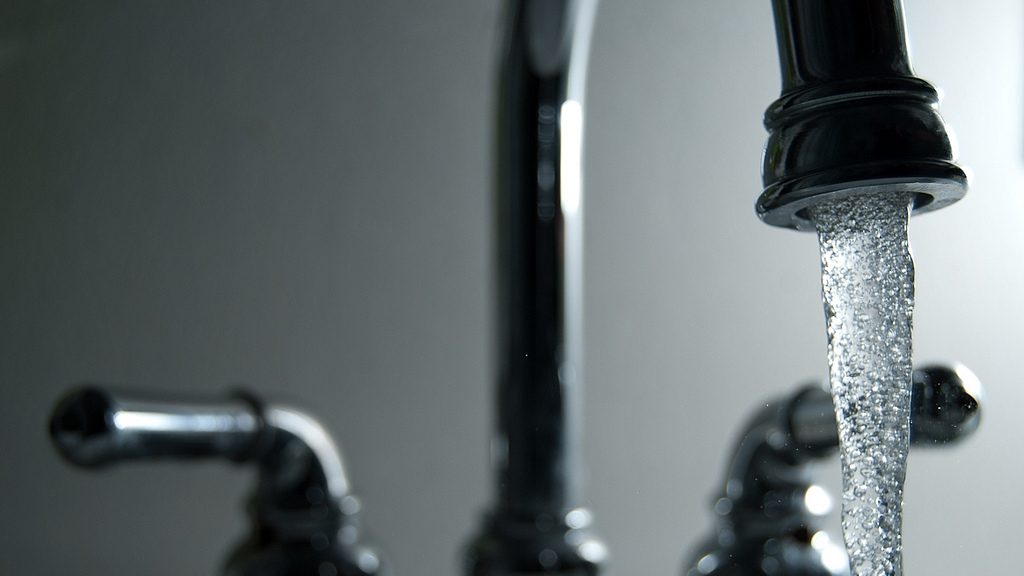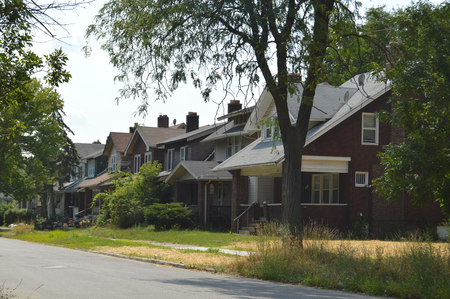Highland Park Water: We Answered All Your Questions about Lead Detection in Drinking Supply
101.9 WDET surveyed Highland Park residents for their most pressing questions about elevated levels of lead found in their drinking water. Here are the answers.


Nine homes in Highland Park tested for elevated leads of lead in their drinking water earlier this month.
Many residents are worried if the city will experience a water crisis similar to Flint, although officials have cautioned against panic. Residents interviewed for this story expressed concern over a perceived lack of communication from city officials. Highland Park officials say that they will replace 7 percent or 50 homes with lead service lines by fall 2020, per Michigan’s revised Lead and Copper Rule. The city is also planning a town hall to discuss the issue.
Here are answers for some of the most pressing questions we heard. This post will be updated as more information becomes available.
How do I get my home tested for lead in Highland Park?
How does lead get into my drinking water?
What do my testing results mean?
How can I tell if I have a lead service line?
What precautions should I take if I am worried about the quality of my drinking water?
How do I get my home tested for lead in Highland Park?
There are various testing and inspection options available.
The Michigan Department of Environment, Great Lakes and Energy or EGLE (formerly the Michigan Department of Environmental Quality) provides drinking water testing services for lead at a cost of $18.00, which covers the cost of the testing kit not including postage. Results will be sent back within 3 to 10 business days.
Other local testing labs offer drinking water testing services for lead and other metals. EGLE recommends that these testing labs are state-certified by EGLE.
The city of Highland Park’s water department will inspect your water service line and residential pipes and test your drinking water for lead.
Contact the city’s water department at (313) 865-1876. The inspection and service is free.
How does lead get into my drinking water?
The water supply does not contain lead, but lead can dissolve into water as it runs through the utility’s infrastructure, such as lead service lines.
Faucets, galvanized iron pipes, aerators and other plumbing fixtures such as hoses or spigots in the home are also sources of lead. Lead service lines are monitored and regulated by EGLE, while at-home plumbing is not.
What do my testing results mean?
Here’s a full guide to interpreting lab testing results.
How the test is conducted: The testing lab will collect a water sample drawn at the first liter or the fifth liter after at least a 6 hour period of non-use. It’s preferred to draw a sample at the fifth liter, as that is a better indication if lead is dissolving in your water as it travels through the service line. A first liter water sample may test high for lead if plumbing fixtures like the aerator have lead particulates accumulated in it.
How to read your results: The lab will analyze your water sample for the metal or chemical requested for testing. There should be a drinking water metal analysis that lists values for both copper and lead, measured in either “ug/L,” or parts-per-billion, stylized “ppb,” two measurements for mass.
- ND or “not-detected” or “< 2 ppb”, it means that the lab could not detect the metal because the concentration was too small.
- RL stands for “Reported Detection Limit” which means that the device used to measure the water’s lead or copper content can only read a minimum value. For example, if the RL for lead is “1 ug/L,” the device used for analysis can only detect a lead value of 1 ug/L or higher.
- MCLG stands for “Maximum contaminant level goal” which is a health based level that measures health risk. The EPA has set the MCLG for lead at zero, as there is no measure of lead that is safe for human consumption.
- AL stands for “Action Level.” Action level is a level that’s used to monitor the need for corrosion control treatment. Under Michigan’s revised Lead and Copper rule, the lead action level will decrease from 15 parts-per-billion to 12 parts-per-billion by 2025.
How do I use a filter?
Point of use filters are filters used to remove impurities at the point at which the device is used and are an affordable option for people looking to reduce the amount of lead in their drinking water. There are filters available for faucets, refrigerators with water dispensers, water pitchers and water bottles. The US Environmental Protection Agency recommends that homeowners purchase filters that are third party certification bodies that are accredited by the American National Standards Institute (ANSI). It should be labeled with the NSF/ANSI Standard 53 certification.
At-home filters do have a time limit for effectiveness, and is specific to each brand. Check the brand labels for information on how often filters need to be changed. If you can’t afford a filter, contact the Wayne County Health Department for financial help.
How can I tell if I have a lead service line?
This NPR app takes you through step-by-step on how to find out if your home has a lead service line.
Be aware that you may still have a lead service line if the pipe connecting your home to the water main has not been replaced. If your water meter is inside the home, look for the small piece of pipe that connects from the wall to the meter. If that piece of pipe is made of metal, take a key or coin and scratch it. If it is a grayish color, easy to scratch and a magnet does not stick to it, then the pipe is made of lead.
What precautions should I take if I am worried about the quality of my drinking water?
Cleaning your aerator regularly will help remove lead particles that get stuck there. If your aerator is old, it should be replaced. Using a certified filter will also help remove impurities from your water. Flushing water between 30 seconds and five minutes is also recommended before using your water.
Water utilities are required to replace the entire lead service line if one is identified, unless in case of an emergency, such as a line break. If that is the case, the water utility should follow up with the homeowner to schedule a replacement of the remainder of the service line.
If you are worried about lead within your home’s pipes, consider contacting a certified plumber and replacing them.

